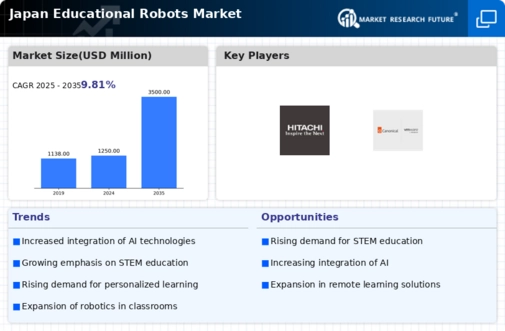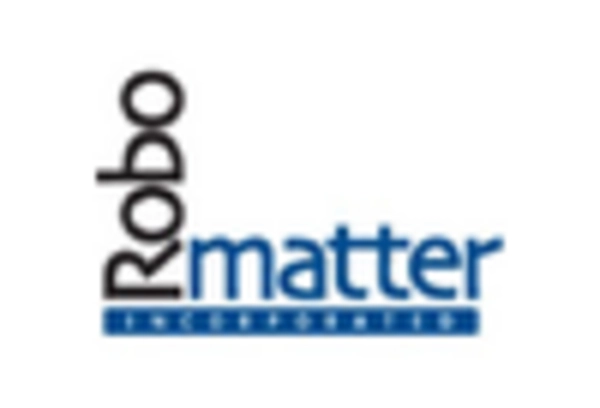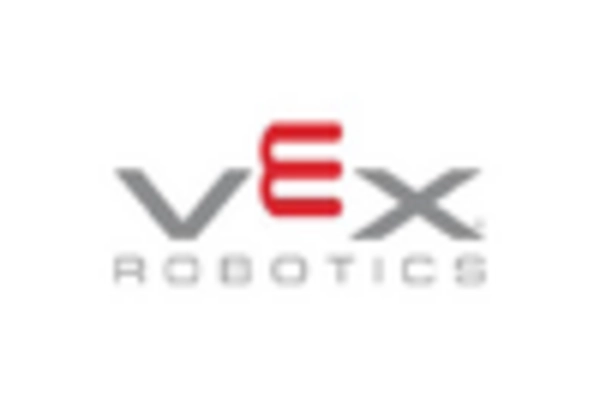Rising Demand for STEM Education
The increasing emphasis on STEM (Science, Technology, Engineering, and Mathematics) education in Japan is a primary driver for the educational robots market. As the government and educational institutions prioritize STEM curricula, the integration of robotics into classrooms becomes essential. Reports indicate that the market for educational robots is projected to grow at a CAGR of approximately 15% over the next five years. This growth is fueled by the need to equip students with skills relevant to future job markets. Educational robots serve as effective tools for enhancing engagement and understanding in STEM subjects, thereby fostering a generation of innovators and problem solvers. The educational robots market is thus positioned to benefit significantly from this trend, as schools increasingly adopt robotic solutions to meet educational goals.
Government Initiatives and Funding
Japanese government initiatives aimed at enhancing technological education are significantly impacting the educational robots market. Various programs and funding opportunities have been established to support schools in integrating advanced technologies into their curricula. For instance, the Ministry of Education has allocated substantial budgets to promote robotics education, which is expected to increase the adoption of educational robots in classrooms. This financial backing not only facilitates the purchase of robotic kits but also encourages teacher training in robotics instruction. As a result, the educational robots market is likely to experience accelerated growth, with more schools participating in robotics programs and competitions, thereby fostering a culture of innovation and creativity among students.
Parental Interest in Educational Tools
There is a notable increase in parental interest regarding educational tools that enhance learning outcomes for children in Japan. Parents are increasingly aware of the importance of technology in education and are actively seeking resources that can provide their children with a competitive edge. This trend is driving demand for educational robots, which are perceived as effective learning aids that promote critical thinking and problem-solving skills. The educational robots market is responding to this demand by offering a variety of products tailored to different age groups and learning objectives. As parents invest in these tools, the market is likely to expand, reflecting a shift towards more interactive and engaging educational experiences.
Technological Advancements in Robotics
Technological advancements in robotics are playing a crucial role in shaping the educational robots market. Innovations such as artificial intelligence, machine learning, and enhanced user interfaces are making educational robots more accessible and effective for students. These advancements allow for more interactive and personalized learning experiences, which are essential in modern education. The educational robots market is witnessing the introduction of sophisticated robots that can adapt to individual learning paces and styles, thereby improving educational outcomes. As technology continues to evolve, it is expected that the market will see an influx of new products that leverage these advancements, further driving growth and adoption in educational settings.
Collaboration with Educational Institutions
Collaborations between educational institutions and robotics manufacturers are emerging as a significant driver for the educational robots market. These partnerships facilitate the development of tailored educational programs that incorporate robotics into the curriculum. By working together, schools and companies can create resources that align with educational standards and student needs. Such collaborations often lead to pilot programs and workshops that enhance teachers' capabilities in using robotics effectively. The educational robots market stands to gain from these initiatives, as they not only promote the use of robots in classrooms but also provide valuable feedback for product development. This synergy is likely to foster a more robust ecosystem for educational robotics in Japan.
















Leave a Comment